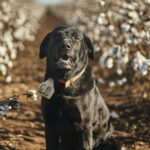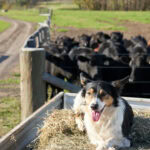Winston lives on a cotton farm near Delungra. He's in the market for a girlfriend…
A shucking good time with Sydney Oyster Farm
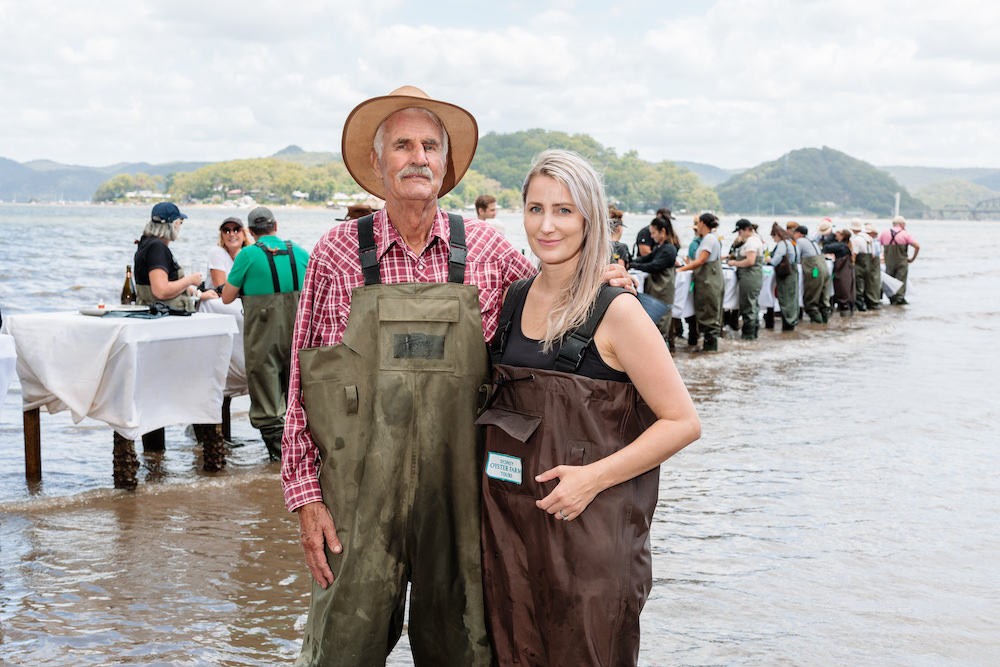
From an idea borne during the pandemic, entrepreneur and third-generation oyster farmer Sheridan Beaumont turned around a fickle aquafarming venture by introducing a successful tourism element. Photography: Scott Stramyk.
The dress code for this dining experience is one I�ve never encountered before. As I join a boatload of people giggling and squawking as we don khaki chest waders attached to knee-high gumboots, the comical attire sets the ebullient tone as we step into the shallows of the Hawkesbury River, before wading awkwardly across to a row of submerged tables draped with white tablecloths and heaped with oysters and jumbo prawns on ice.
This classy �in-water restaurant� is the setting for Sydney Oyster Farm Tours� �Immerse Yourself� activity, a half-day oyster dining experience that�s become popular with celebrating couples, as a gift for special occasions and amongst corporate groups, as well as one of the most Instagrammable moments for social media influencers.

For Sydney Oyster Farm co-owner Sheridan Beaumont, this new tourism venture � introduced just prior to Covid lockdowns but firmly established in the past two years � has totally transformed her family�s farming business, literally saving it from the brink and providing financial stability in a notoriously fickle aquaculture enterprise.
�I expected it to be just a little side hustle, I never expected it to get as big as it did � not that I�m complaining!� Sheridan says. �Now, the tourism is totally supporting the farm. It pays for all of the workers helping Dad [on the oyster leases], it pays for the fuel � it�s transformed everything.�
A family business
With 17 leases on the Hawkesbury River, Sydney Oyster Farm has been supplying fresh oysters to the Sydney Market since 2006, with the love of oysters and life on the water running firmly through third-generation farmer Sheridan�s veins.
�My grandfather was a hobby farmer on the Hawkesbury in the 1950s, but it wasn�t a commercial business,� Sheridan says. �But because my dad grew up in that environment, he always had this romanticism attached to farming.�
When an opportunity arose in 2006 for the family to take over a struggling oyster farm impacted by QX disease (caused by a single-cell parasite that attacks Sydney Rock Oysters), she and her brother Jason earned their share by working alongside their father, learning the aquafarming business from the water up.
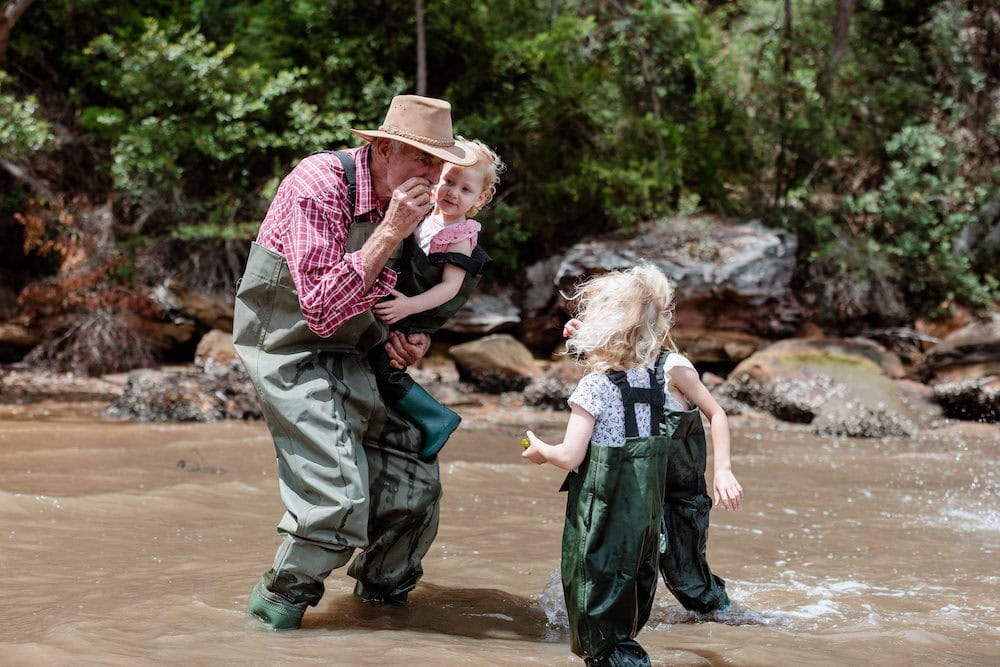
Oysters are a sensitive crop, however, vulnerable to impacts of pollution, predators, disease and climate change. During a forced pause in trading in 2013 due to a fatal Pacific Oyster Mortality Syndrome (POMS) outbreak, Sheridan decided to follow her other dream of becoming a doctor, embarking on her third degree at medical school.
Then came children � three in rapid succession, with twins followed by another baby 15 months later, before a fourth born in December 2022. Juggling her family commitments and passions with the tenacity of a superhero, the young mother, medical student and oyster farmer had a lightbulb moment in 2019, deciding to add a tourism element to her already impressive portfolio.
�I hosted my first tour in second-year med school, a special event for Talisker Whisky,� Sheridan says. �They gave me all of their photos and videos after the event, and I literally that night went back and made a website � it was so easy, it only took an hour or two and it looked really professional.�
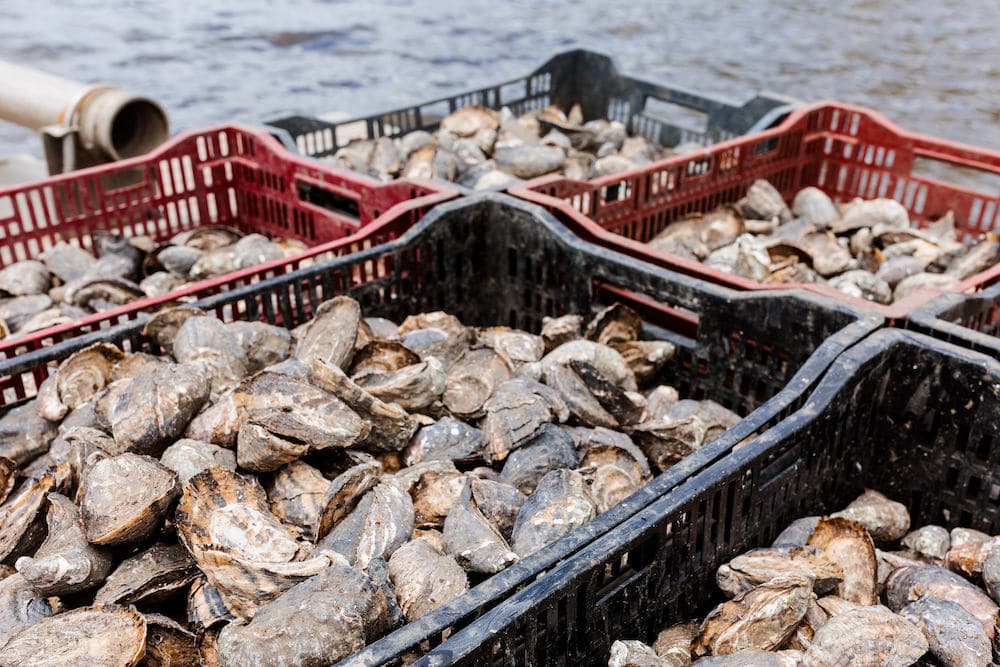
Inspiration from adversity
But what started as a buffer to the variables of farming soon proved to have its own challenges, with a series of unrelated setbacks adding to Sheridan�s already over-stretched workload.
�We were basically in ruins when this whole thing started,� she explains. �Our oyster shed had just burnt down, my brother had a massive heart attack and we�d had back-to-back floods that had almost decimated the entire farm � we�d lost hundreds of thousands of oysters.�
Then, just as bookings for the new boat tour began to take off, another disaster hit, with the pandemic grinding the fledgling enterprise to a halt.
But for Sheridan, the enforced slowdown provided an opportunity to fine-tune details of the tour, and to create the unique experience that sets it apart from other boat-based oyster tours.
�I was wondering how we were going to socially distance on the boat, then I came up with the idea of putting tables in the water, to spread people out that way,� Sheridan says. �But it took me almost two years to get all the approvals, including a development application since council considered it an in-water restaurant.
�I was at home with three kids under 15 months, writing documentation, getting approvals and chasing my tail trying to get it across the line. I was obsessed, because I just knew it was going to be amazing � it just hadn�t been done like this. Honestly, if it hadn�t been for Covid, I�m not sure I would have done it.�
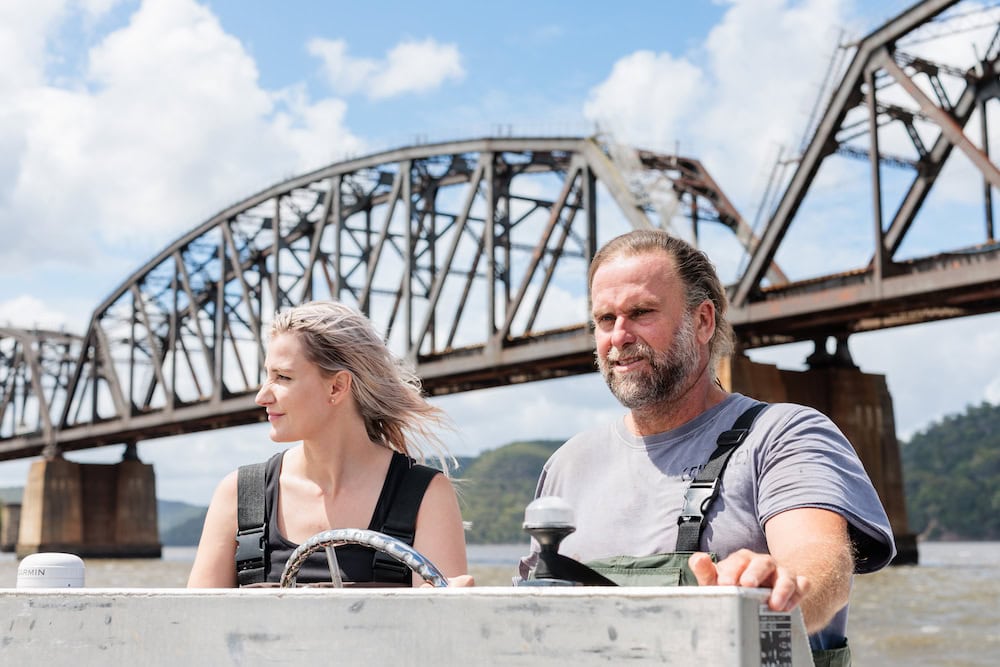
On tour
Before the oyster dining experience, Sheridan � or one of her local guides � takes groups of up to 50 on a boat ride through one of Sydney Oyster Farm�s leases at Mooney Mooney, explaining the process of growing Sydney Rock and Pacific oysters and the threats they face from natural predators and diseases.
She also shares stories of trying to save the crop during the devastating rain events of 2021 and 2022, and the desperation she felt as she attempted to move vulnerable oyster trays to safer places on the river.
�I remember the date so well: 19March. That flood was the one that did the damage. The dam was already at capacity, so it had no buffering ability, and there was just so much water. And because it was fresh water for such a long period of time, we basically lost 100 per cent of our Pacifics. I�d say at least 600,000, probably a lot more.
�I was doing tours, and pulling out baskets of dead oysters and people were like, �oh coooool!� It was so embarrassing! Everything was dead everywhere. Empty shells. Oyster farmers are the only farmers that don�t like rain, I think.�
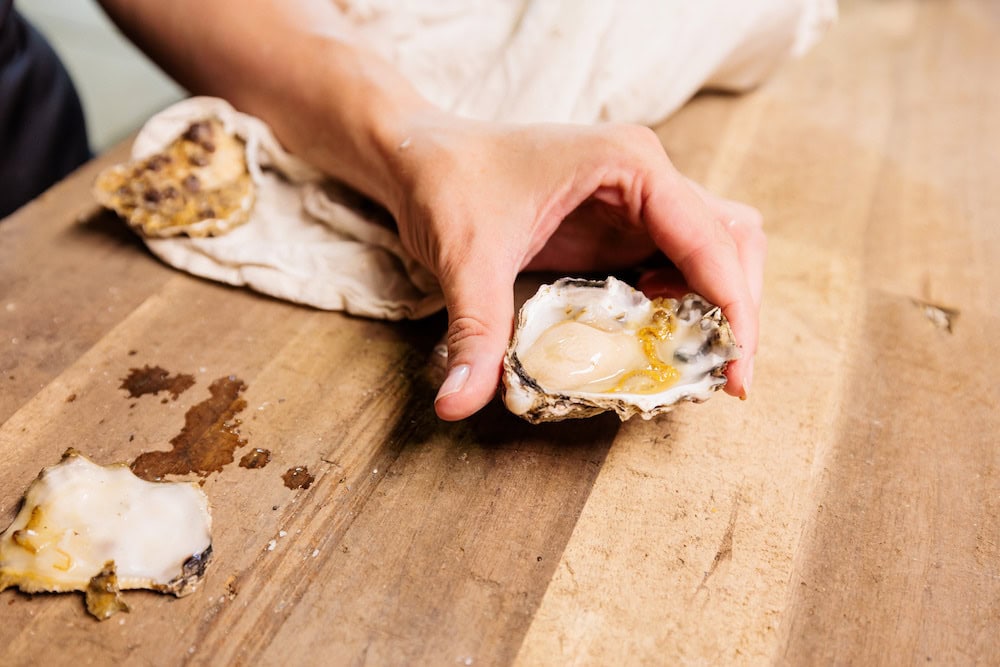
A shucking good time
For tour guests, these personal stories of the challenges and adversities of farming truly resonate, helping them to appreciate the hard work and heartbreak that goes into the delicious slurpy molluscs on their plate. But after pottering through the leases and learning about the oyster farming business, it�s time to put the product to the taste test.
The �restaurant� is set up in a wide, sheltered bay � one of the only parts of the Hawkesbury with a sandy bottom. A formerly derelict oyster lease, Sheridan had to tender to reactivate this site � another time-consuming process during lockdowns which became an essential part of the operation�s success.
�When I first started the tours, I used Ikea tables set up on stilts,� she explains. �But as the tours became more popular, it got crazy setting them up each day. I�d be getting ready to pick up the guests in the boat, and I�d have three crew getting the tables ready. But getting to the site early didn�t work, due to the tides � they�d be putting the tables in, and they�d start floating away � it was just mayhem!�
Now the tables used on the tour are permanent fixtures, built from oyster infrastructure to meet zoning requirements. The sticks holding the tables in place are oyster racks, while the tabletops are upturned oyster trays, covered with a cloth.
�What guests don�t realise is the timing of this whole operation,� Sheridan says. �Depending on whether it�s a rising or falling tide, I�m picking up guests from the jetty at the same time as the permanent tables just uncover. During the time I do the tour, the water will drop a foot, until it becomes a great height for people to stand at the tables. If I take too long on a tour, it can drop too low � if I come in early, it can be too high.�
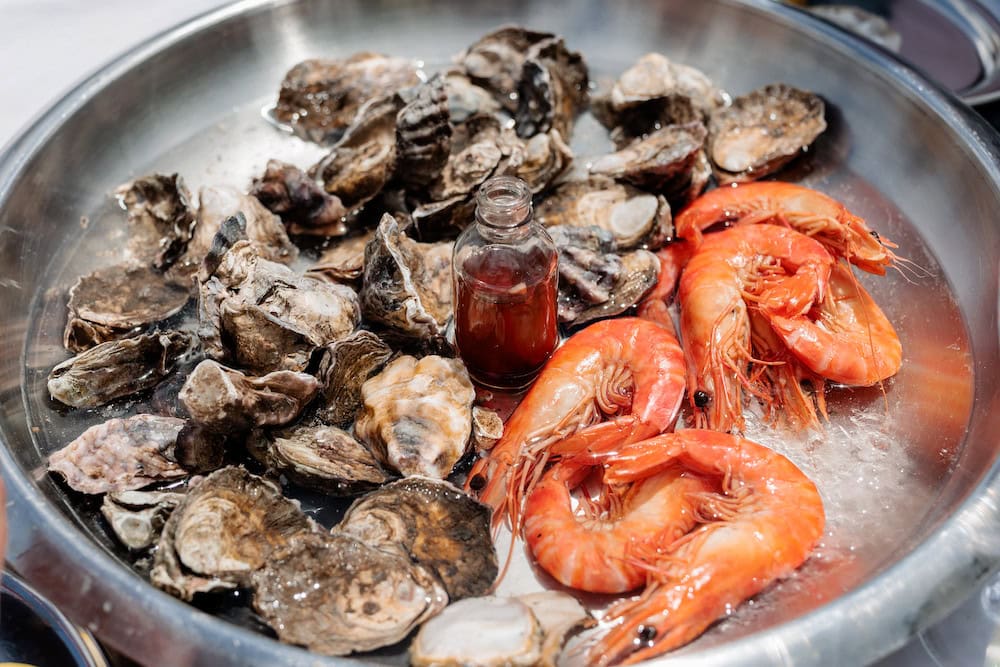
Oblivious to all these details, however, guests have one thing on their mind: eating oysters. But such delights don�t come without effort � first they have to learn to shuck the bivalve molluscs, opening the shells to reveal the meat inside. Then, with an accompanying glass of champagne � or perhaps a shot of whisky to enhance the smoky flavour � the oyster is consumed, with each guest allocated 18 oysters, fresh from Sydney Oyster Farm leases.
With approximately 10 tours currently running a week � and with the demands of parenthood as well as finalising her medical degree in September 2023 � Sheridan has been forced to take a step back from the hands-on role as tour guide, training a team of locals to operate the tours. She is also planning an expansion of the tourism business, purchasing oyster leases in Cronulla (in the south of Sydney), Port Stephens and Queensland, which will be managed by members of her extended family.
Meanwhile, other oyster farmers on the Hawkesbury � who originally thought she was �crazy� for attempting the new enterprise � look upon the crowded boats of tourists with piqued interest, keenly observing the transformation of the farming business.
�Everyone was a bit shocked in the interest,� Sheridan says. �We know that people love oysters, but it�s more than that � we have people that don�t even like oysters coming on the tours.
�Really it�s about people wanting to connect and do something different and just step outside.�
If you enjoyed reading about Sydney Oyster Farm, you may like to read this piece about the resilience of the oyster industry in NSW.


